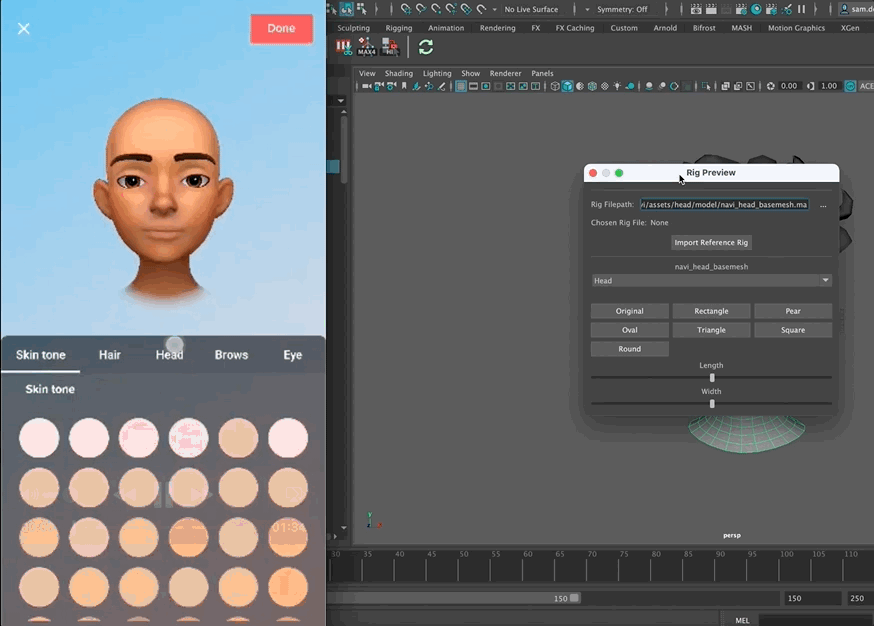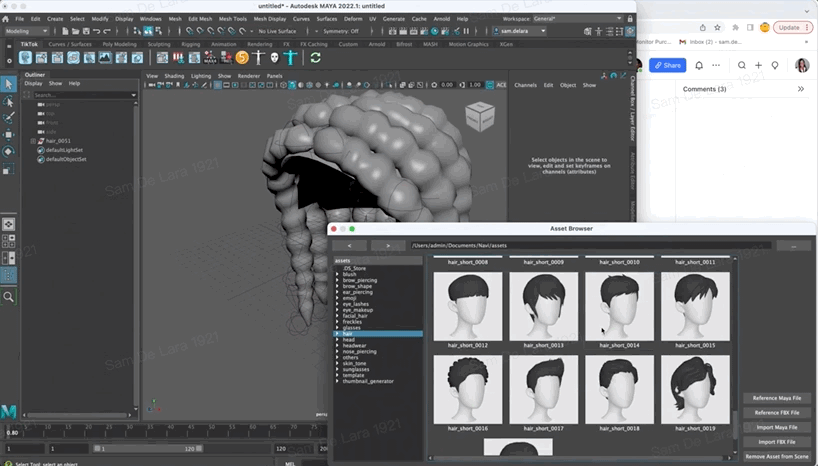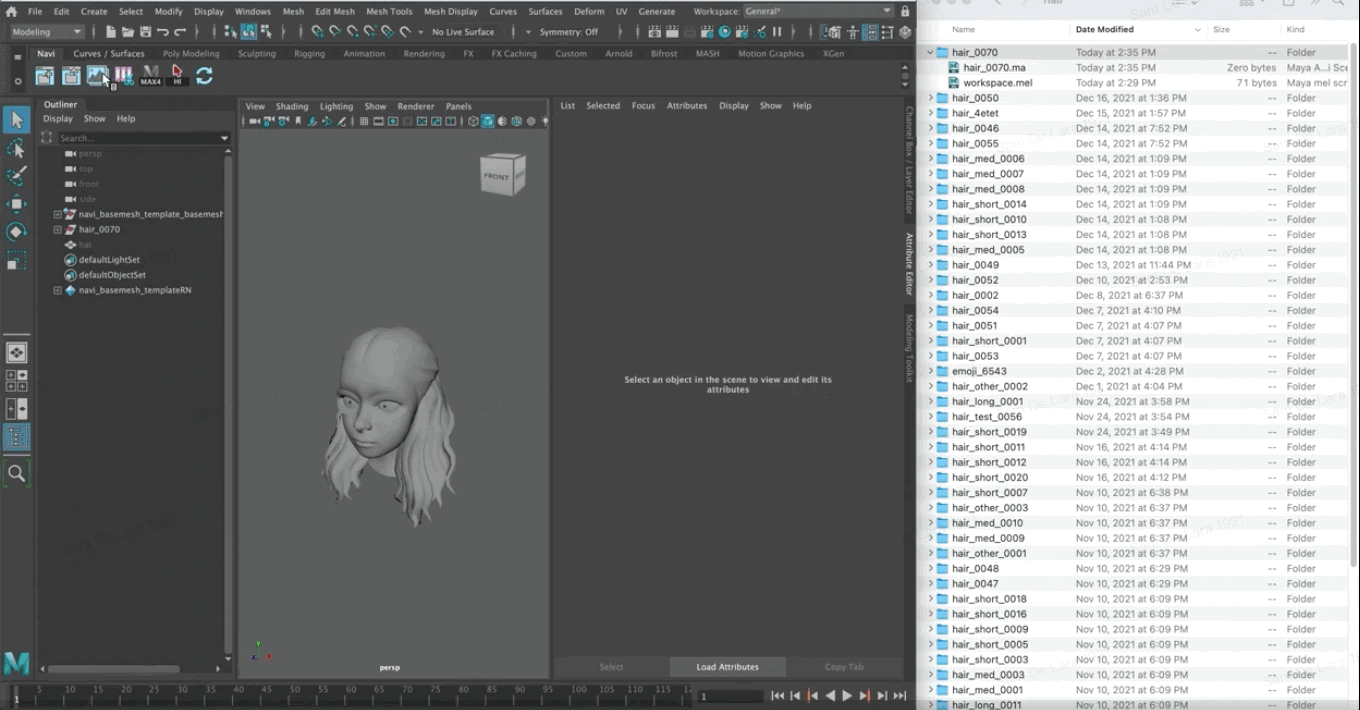Problem: Artists and engineers were reporting that the established pipeline for TikTok Avatars was filled with repetitive tasks & took too long. The process of creating for this project was to blindly create the asset in Maya without knowing how an asset was going to look in the app, which led to teammates guessing in Maya and then checking on their phone afterwards how it looks. When looking for any given asset, teammates would be looking at a list of numeric filenames instead of knowing what asset they were working with. Creating thumbnails for each asset involved manually importing each Maya file into a template scene to render.
Solution: I created a way to preview all the different options of customization in Maya that mimic what was open to our end users in the TikTok app. I made an asset browser with images for our team to always know what asset they were importing or working on. I also created a thumbnail generator to speed up the thumbnail creation process.
Outcome: With the implementation of these and other tools by our team, we were able to ensure that this project could scale more easily as more assets were created, streamlining tasks that would take many minutes from our team into seconds. My team built all our tools with the existing previous TikTok Avatar pipeline in mind, so there was very minimal lift for our other teammates to implement our tools into a new workflow.
In June 2022, TikTok Avatars went live to users for the first time: https://newsroom.tiktok.com/en-us/express-yourself-through-tiktok-avatars



